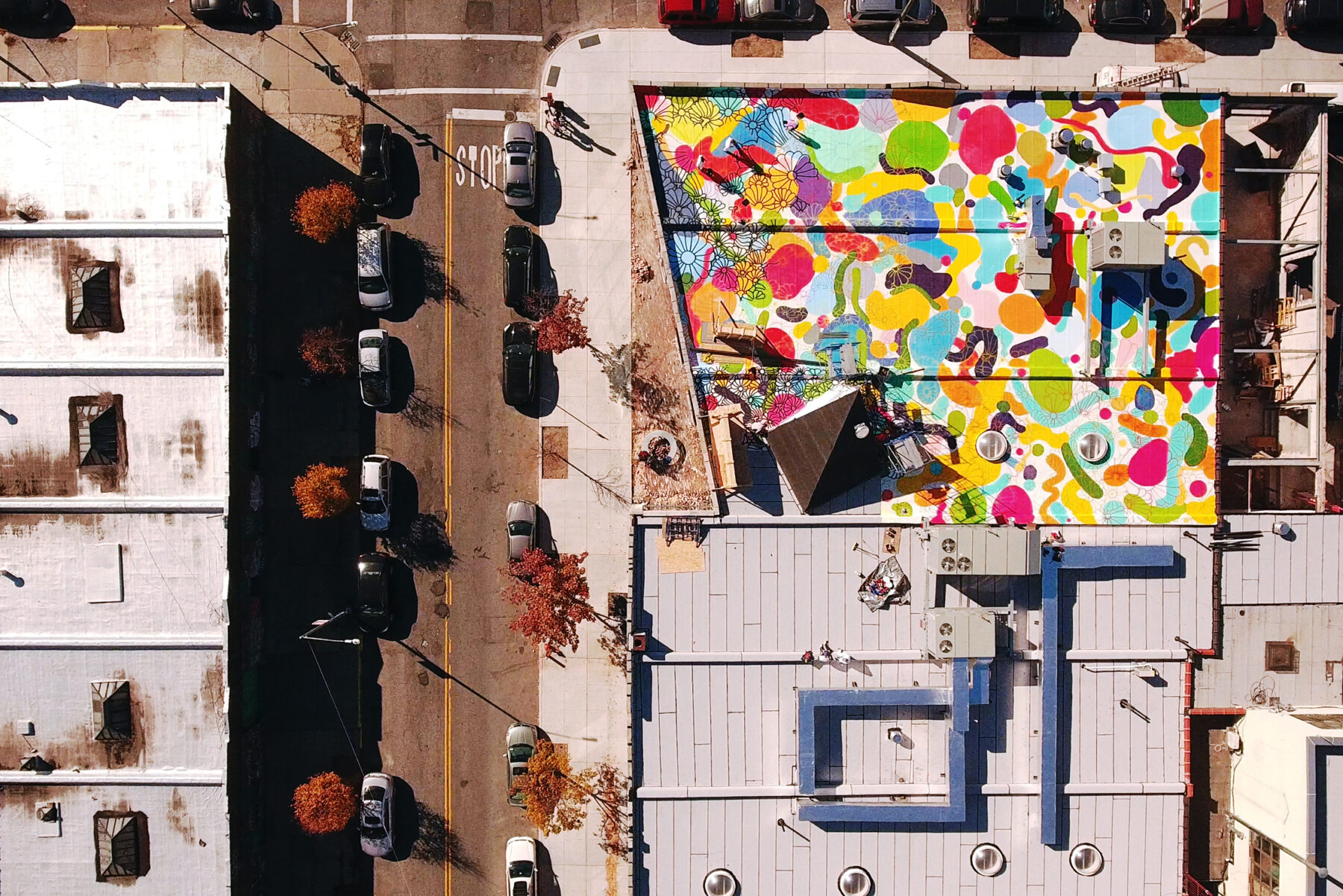The neighborhood of Greenpoint, Brooklyn, occupies a particular place in the psychogeography of locals.
Extending north toward Queens in a kind of peninsula, it’s a maritime area occupied by the remains of industrial infrastructure and shipping docks jutting out into the East River. It’s been developed by Polish immigrants, polluted by oil spills, and only recently become a destination for newer Brooklynites moving on from gentrified Williamsburg. It might be best described as having a split personality: Part artists’ lofts and manufacturing; part leafy side streets, row houses, and welcoming bars and restaurants.
This composite identity is why A/D/O fits right in to the mix. On a corner in the southern part of the neighborhood, the 23,000-square-foot structure transforms a warehouse into a glassy, welcoming public space that opened in January 2017. The design, by nArchitects, bridges the gap between an industrial past and a mixed-use future by combining both into the same building. Unlike the boarded-up garages and storefronts on the other side of the street, A/D/O is transparent in both its form and function. Through the glass facade you can see Norman, the restaurant created by Fredrik Berselius and Claus Meyer and studio spaces.
“We wanted to offer a workshop and space for designers with tools and expertise, but we also wanted to make sure the neighborhood could offer what we could not.”
Alyse Archer-Coité, director of culture and programming at A/D/O
A/D/O stands for Amalgamated Drawing Office, referring to the team around Sir Alec Issigonis, who designed the first MINI in 1959. Amalgamating today under the motto “Built for designers—open for all” is a studio space for designers who can apply for membership, a publicly accessible coworking space and a calendar full of cultural events. Similar to the Amalgamated Drawing Office, which was faced with a social challenge—the first MINI was a response to the then acute fuel shortage—A/D/O also wants to enable products and services with a social relevance. On that note, the in-house Startup Accelerator Urban-X primarily promotes ideas that redefine and improve city life.
MINI launched this experiment in urbanism which acts in its own way as a blueprint as a example of new modes of city living. With on-demand car services in the form of Lyft and Uber and on-demand spaces provided by the likes of Airbnb and WeWork, the way we interact with local urban networks has changed. Ideas of mobility, portability, and flexibility are becoming more important. A/D/O is driving “research into innovation and new possibilities and directions for the urban environment,” says Alyse Archer-Coité, the director of culture and programming at A/D/O.
What so many technology start-ups lack is a true engagement with local culture. Integrating into the fabric of the area on a logistical as well as social level was a major goal. “We wanted to offer a workshop and space for designers with tools and expertise, but we also wanted to make sure the neighborhood could offer what we could not,” explains Archer-Coité In other words, if the A/D/O fabrication lab can’t handle a designer’s ideas, then Greenpoint’s many factories and studios certainly can.
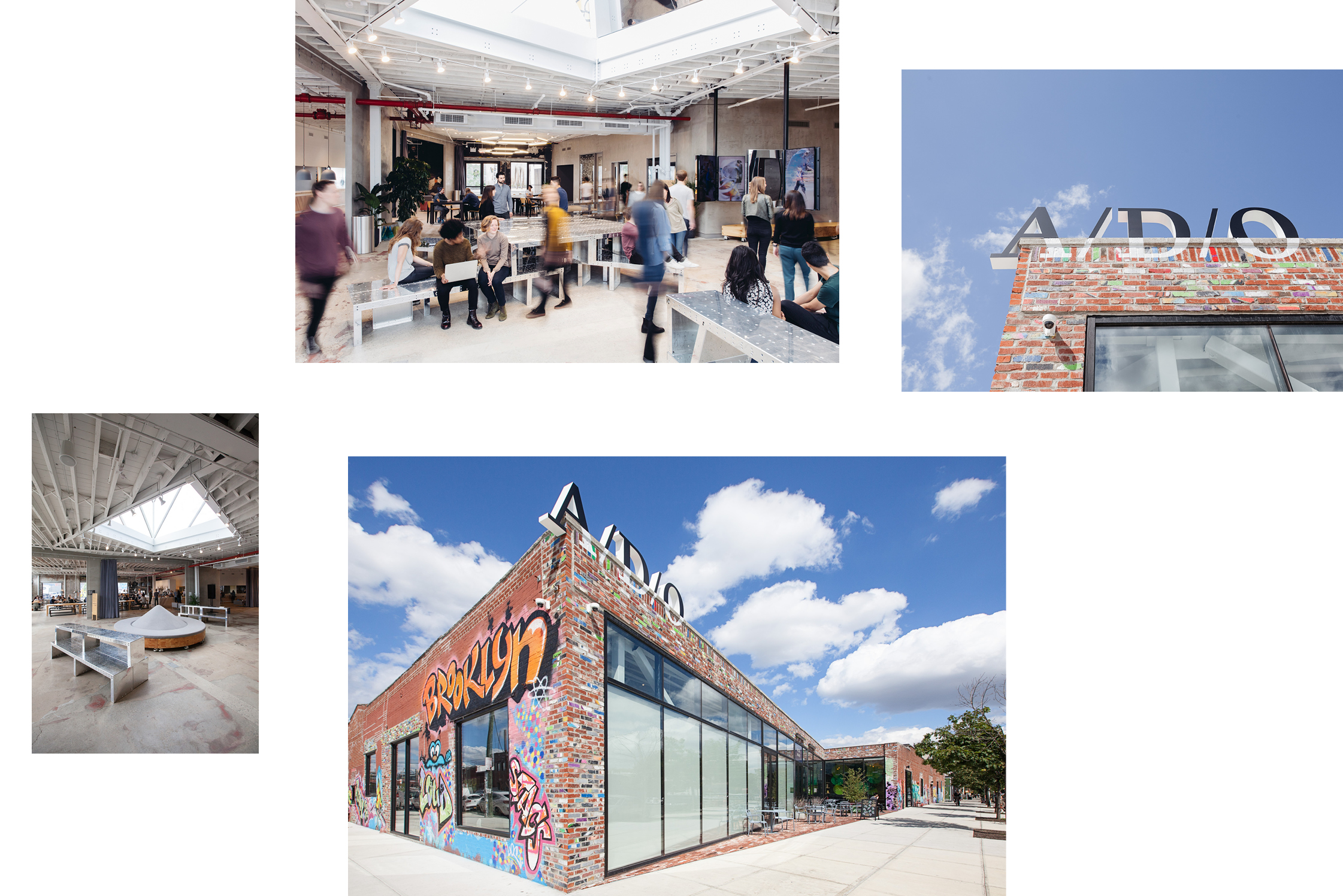
“We want to offer things that people cannot find at the MoMA design store or on Amazon.”
Alyse Archer-Coité, director of culture and programming at A/D/O
Unlike a pure coworking space or office incubator, A/D/O isn’t just a space to work. It provides a kind of design hub. “You can go from ideation to fabrication to marketing and sales,” Archer-Coité says. “We want to offer things that people cannot find at the MoMA design store or on Amazon.” A product conceived in the studio and fabricated in the lab can then be shown and sold within the retail space of A/D/O. It’s a place where the theoretical becomes actual. The density of participants and purposes also means that different industries can collaborate. In the increasingly decentralized, global world of design, that kind of closeness “doesn’t exist for designers unless they’re in a festival or fair or in school,” Archer-Coité adds.
Of course, it’s not just physical space that’s important. Lofts abound in the industrial sector of Greenpoint, but what’s less common are the more human elements that make creative work in a place possible—pleasant, even. Walking into A/D/O, visitors are welcomed by the elegant expanse of Norman, where in the morning you can grab a cappuccino and a breakfast sandwich at a sun-lit blonde wood table and in the evening host a client dinner for 15 with oysters and charcuterie boards.
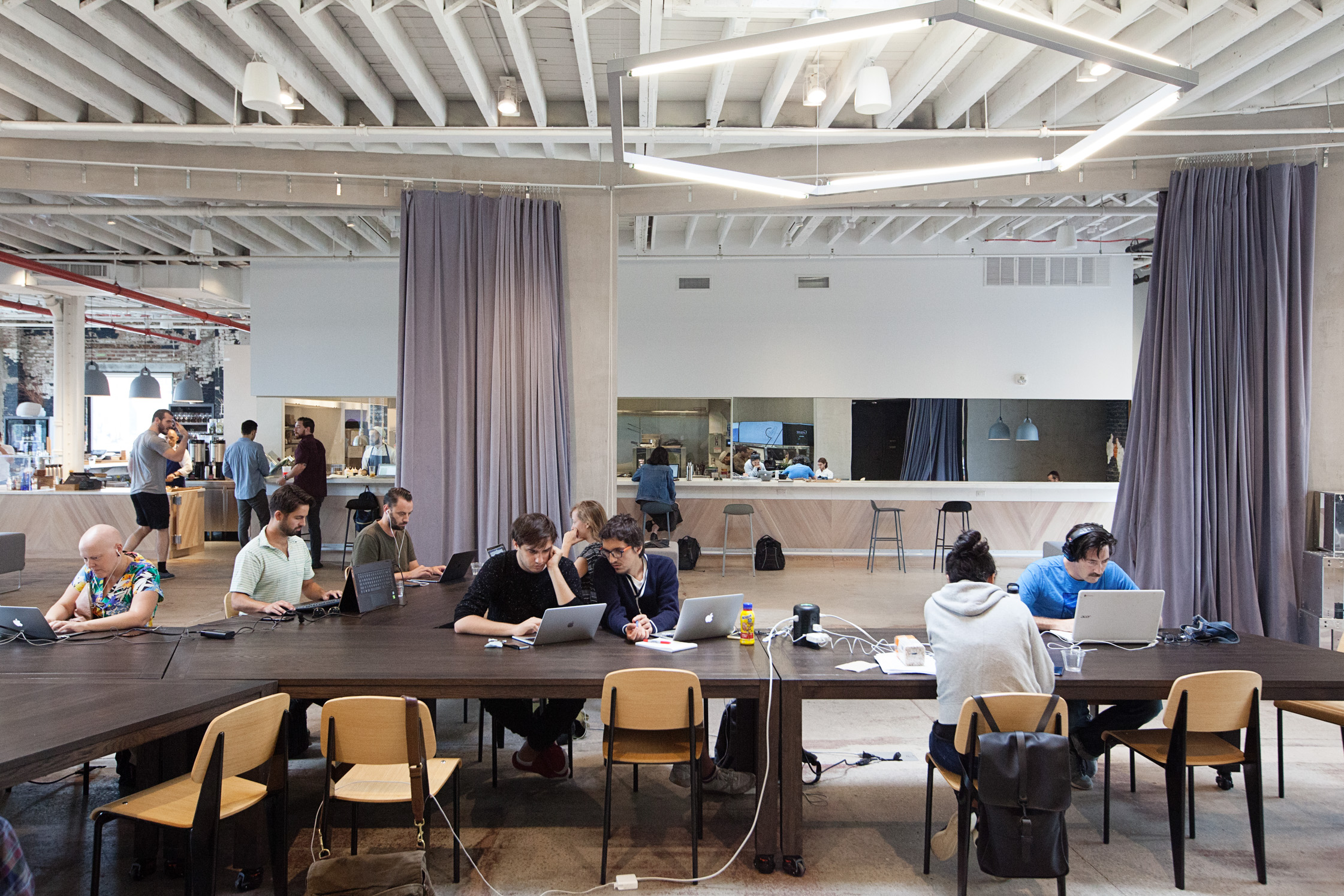
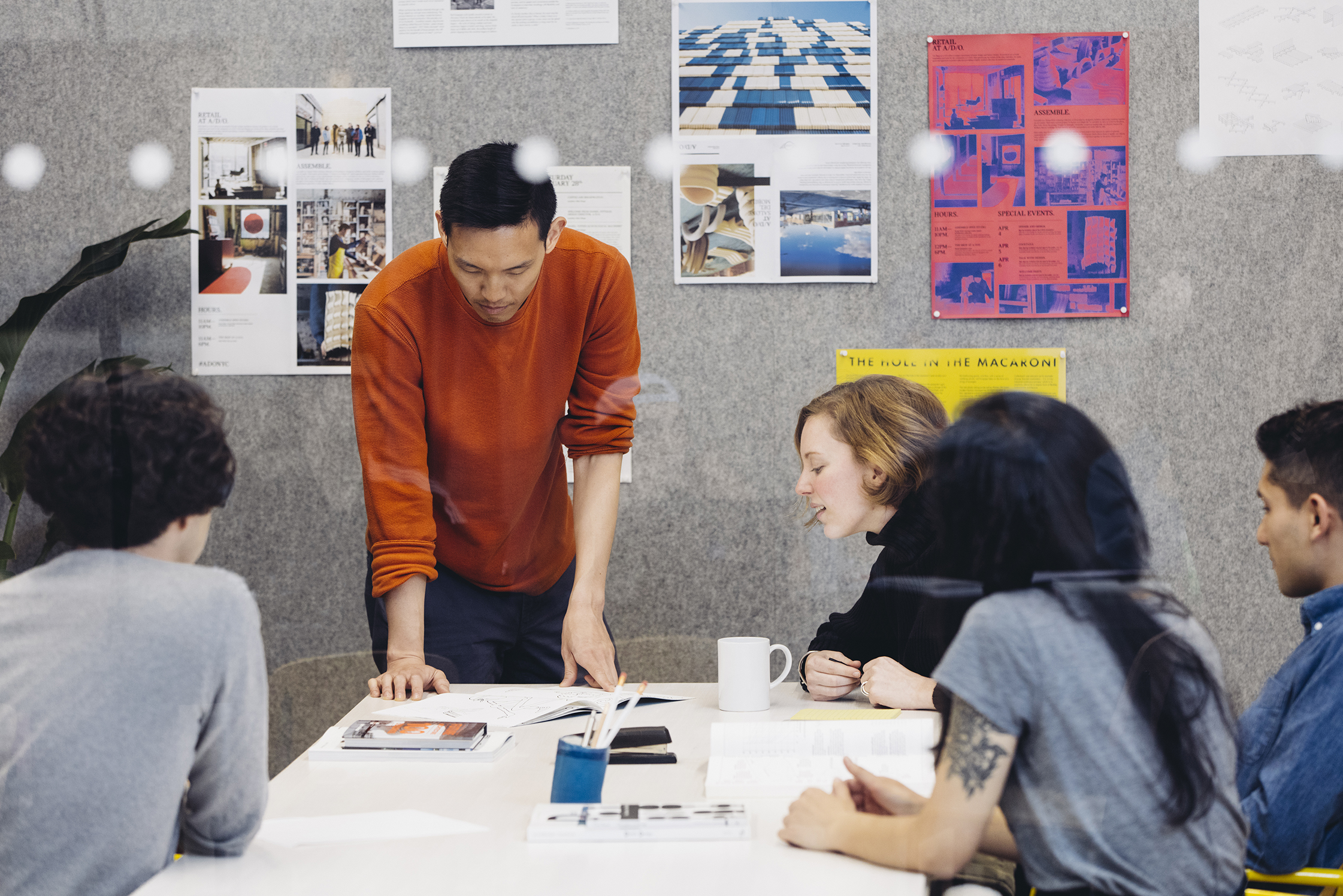
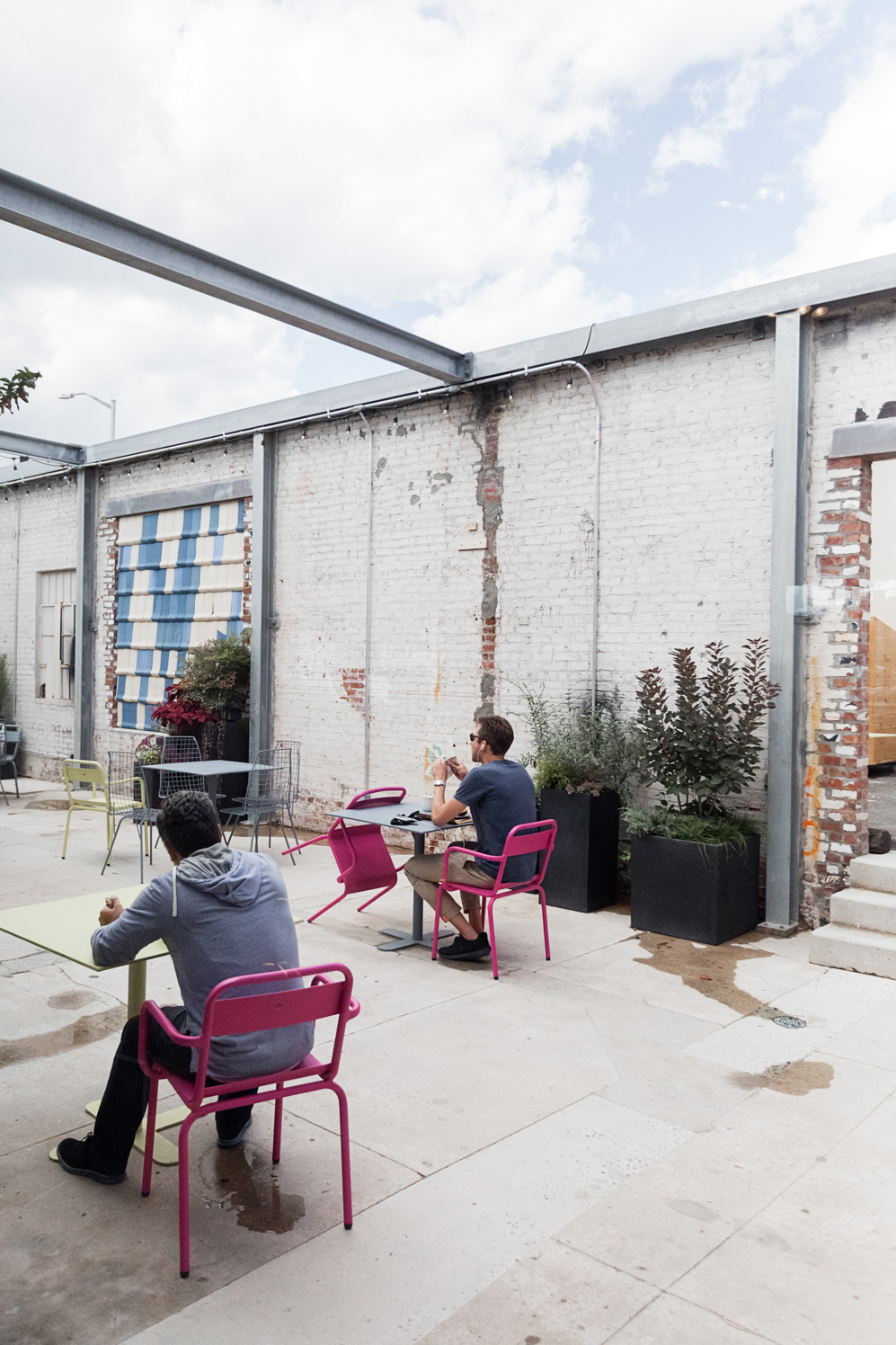
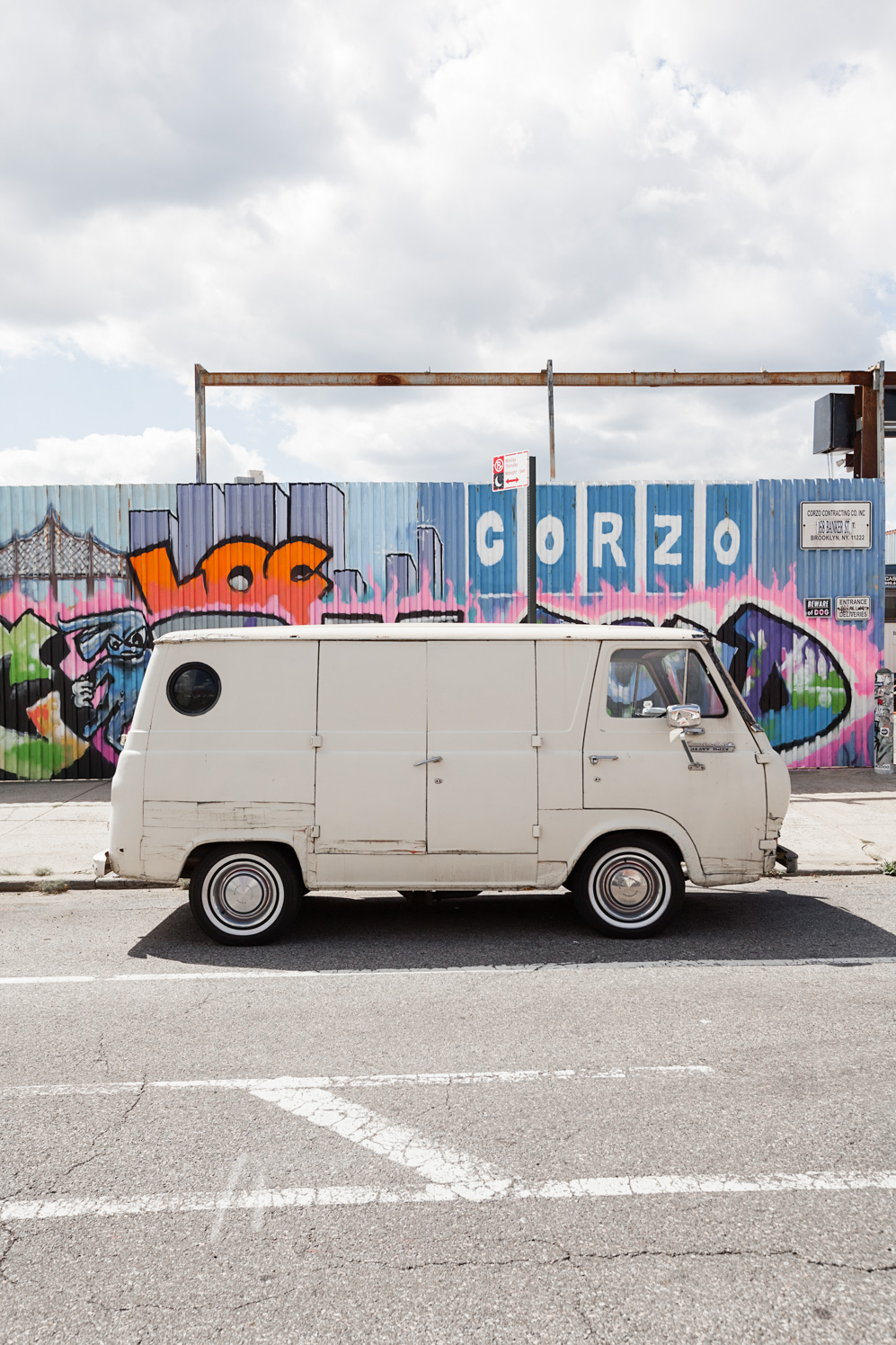
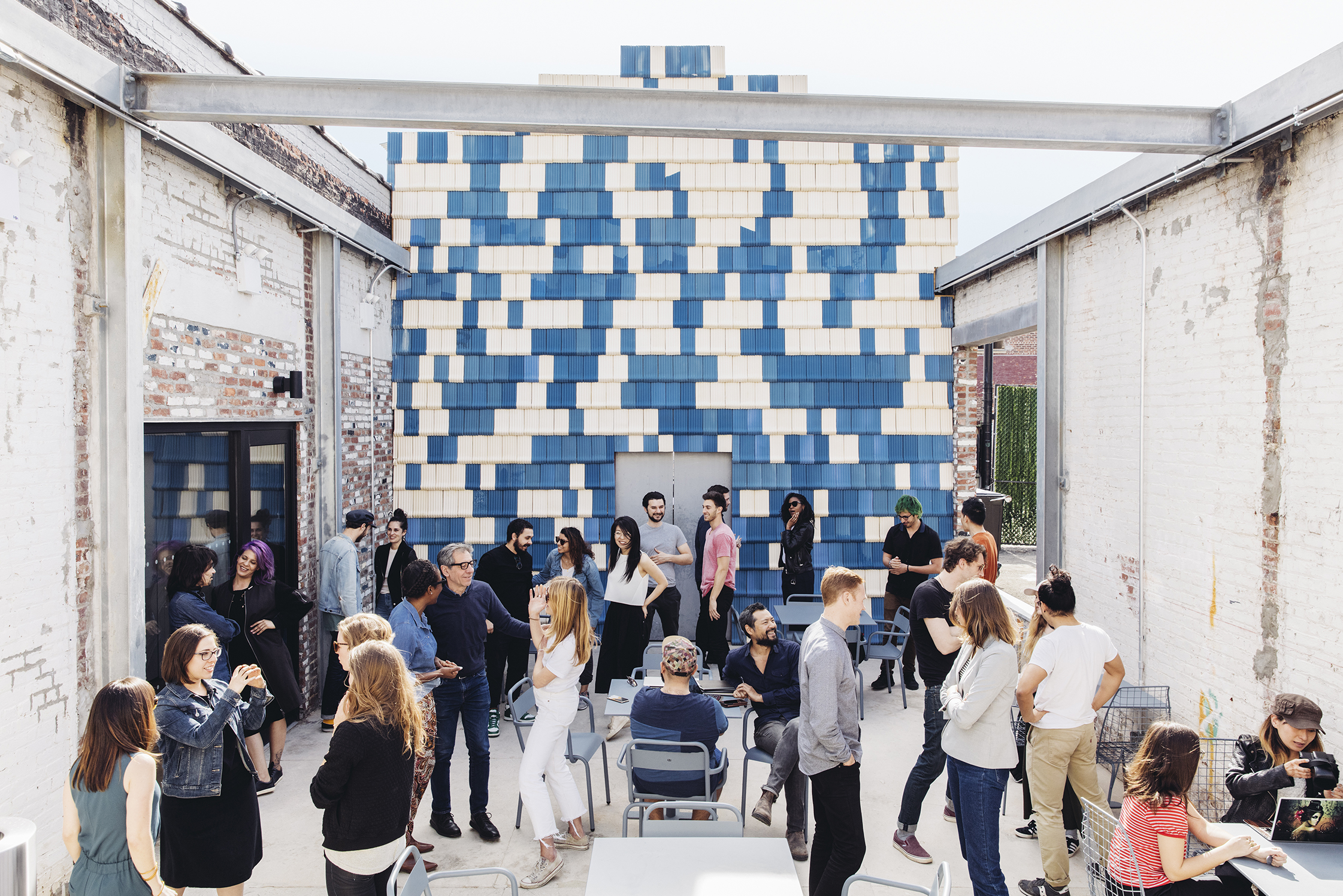
Elsewhere in the space, nArchitects contributed custom-made furniture that mixes an industrial palette with soft materials and multiple textures for an interior that’s both intimate and scalable. For the usual ad-hoc infrastructure for independent creative workers—coffee shops and hotel lobbies—there’s a constant deficit of both seating and light. Not so at A/D/O, where there are always plenty of tables underneath huge skylights that illuminate the workspace.
A/D/O isn’t the only example of this mixed-use approach to creative urbanism. First in Manhattan and then in Brooklyn, soon moving to Bushwick, the arts nonprofit Eyebeam has long worked at the intersection of technology and culture, providing a home for artists, funding grants, and mounting exhibitions. The New Museum’s New Inc., on the Bowery, also houses an interdisciplinary office space, but concentrates more on start-ups and larger studios. Where A/D/O differs is in its public utility. Rather than catering only to the art world, the space is meant to give others an entrance into a rarified culture.
To that end, A/D/O is reaching out to local schools, community groups, and creatives to drive programming at the space. “We’re a platform but we’re also meant to be a resource,” Archer-Coité adds. “We didn’t want to be a UFO that lands in and we own the street corner; we want to have the neighborhood feel invited.”
For additional information on the program and upcoming projects around A/D/O, check their website and find more details about Urban-X here. If you’re interested in the types of design work that A/D/O fosters read more about nArchitects here.
MINI and FvF have been dedicating themselves to the urban themes of our time for several years now. The close partnership gives us an exclusive insight into the international initiatives of MINI. In addition to visiting A/D/O and Urban-X, FvF have accompanied MINI Living to Milan and MINI Fashion to Florence.
Last year, MINI and FvF also launched The Sooner Now, a series of creative conference and dialogue formats on the future of urban life.
Text:Kyle Chayka
Photography: A/D/O and James Chororos
